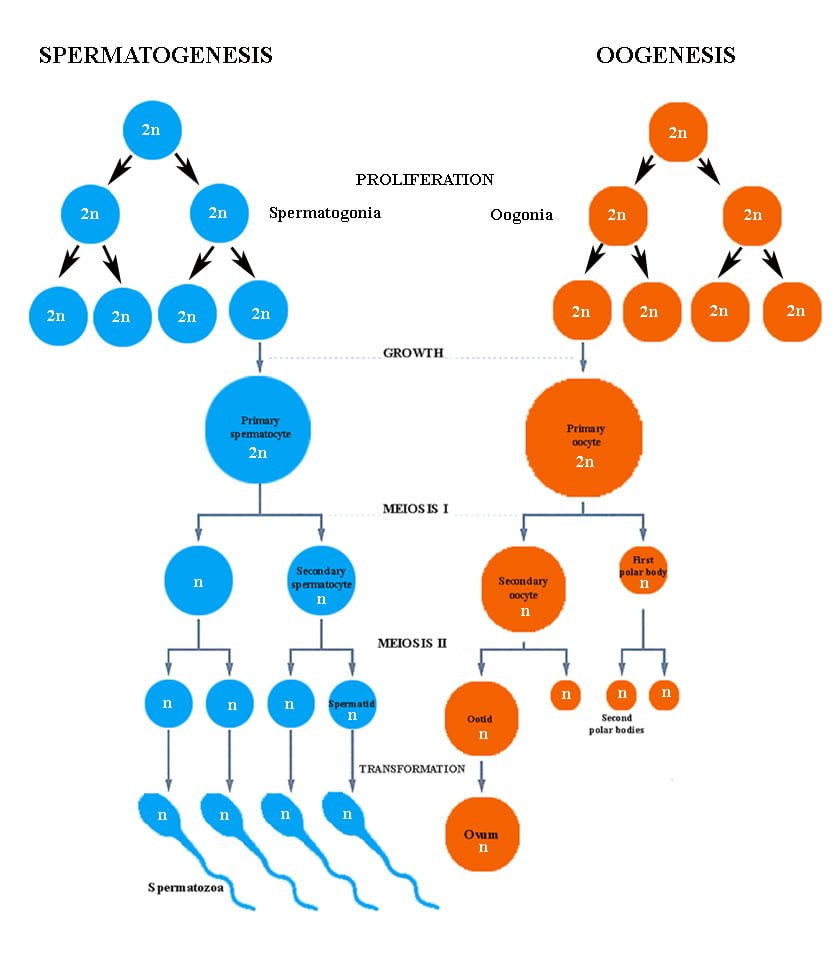TABLE OF CONTENTS
Oogenesis in animals
Oogenesis is the process by which the female gamete or ova is produced. It takes place in the ovary.
The ovary is a compact mass of connective tissue, smooth muscle fibres blood vessels, nerves and ovarian follicles at different stages of development. The entire ovary is covered by a thin germinal epithelium. From this, the germinal cells dip into the substance of the ovary and these are the oogonia. Like spermatogenesis, the oogenesis takes place in three phases namely- Multiplication phase, Growth phase and Maturation phase.
The process of oogenesis is more complicated. It involves not only the production of the ova but also the acquisition of food reserves for the developing embryo.

Multiplication phase
The ova are derived from the primordial germ cells, which undergo proliferation by mitotic division and the resulting cells are called Eugenia or egg mother cells.
When the division stops, the cells are termed primary oocyte which enter a period of growth. The nucleus of primary oocyte is in diploid state (2n).
Growth phase
Growth plays a much greater role in oogenesis than in spermatogenesis. During this period, nutritive substances and other materials necessary for the development of embryo are synthesized.
Maturation phase
The primary oocyte under goes the I meiotic division to form two haploid unequal cells- a large secondary oocyte with more cytoplasm and a small polar body with little cytoplasm. Then the secondary occtye undergoes II meiotic division resulting in a large cell ootid and a small second polar body.
Sometimes the I polar body divides into two polar bodies. Thus in oogenesis, one ootid and three polar bodies are formed from a single primary oocyte. The ootid then becomes the mature ovum. The three polar bodies are soon degenerates.

